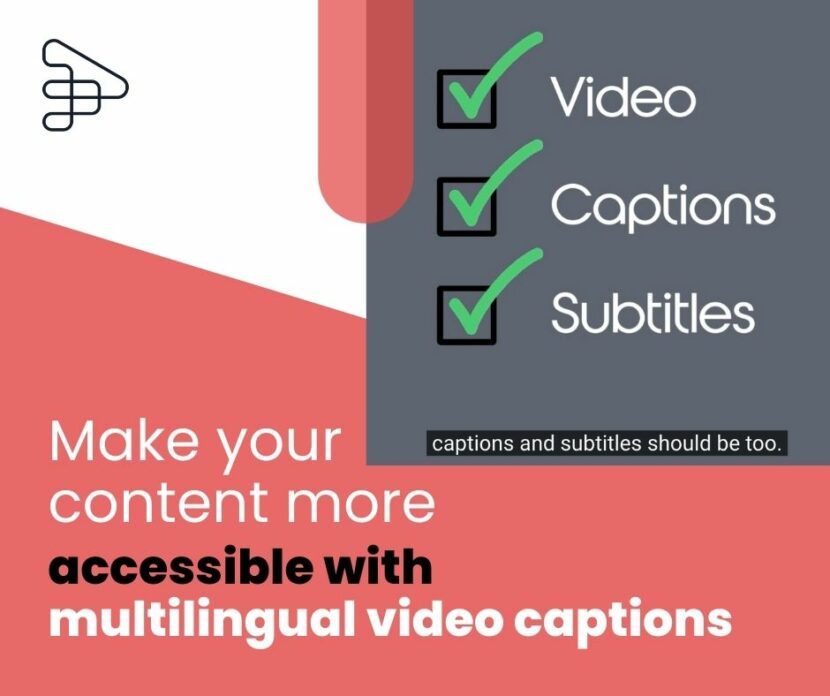Video captions and subtitles are an easy and affordable way to make your content more accessible. By adding these to your videos you can easily reach a wider audience, such as the hearing impaired, international viewers or those who prefer to watch their videos with the sound off.
There is a difference between captions and subtitles, and that needs to be understood before you implement them to make sure you’re getting the right thing.
They’re very easy to use and can give the viewer full control over whether they watch with them on or off, languages and even size.
What’s the difference?
It’s important to distinguish between what you’d like on your video, as captions and subtitles are different. Captions are on-screen video text that represents a text version of the spoken audio in a video. Subtitles are also a text version of the spoken audio, but they’re also a translation into different languages. Subtitles can be offered in most common languages and both options should always be considered when creating video content to appeal to a higher viewership.
How do they work?
There’s a few different ways captions and subtitles can be applied to video content. The first is with a .srt file (which can be supplied through your media service provider or video production specialist). SRT is the file format for captions or subtitles, and can be added to a variety of online video platforms and software (like YouTube, Vimeo or Facebook). The SRT file can be uploaded into the appropriate video in your online software in multiple languages, which gives the viewer the option to switch closed captions on or off, change the size and font (in some video players) and change languages. The second option is to hard-code or burn-in the captions. This means the text is permanently embedded into the video and can’t be turned on or off.
There’s pros and cons to both, and the second option tends to be more expensive as it requires more video editing time, so chat to your video production specialist about what’s right for you.
“One of the clearest indications of its popularity is the finding that four out of five people who use closed captioning when they’re watching video don’t actually need it. They just do it because they like it and it lets them make a deeper connection with the material they’re watching. Captioning helps to reinforce the visual messaging and in noisy places, like bars and gyms, it’s the only way for people to follow what’s happening on screen.” – Rev.com
Put simply – if any type of video is part of your marketing strategy, captions and subtitles should be too. Have a chat to our team to learn more.

